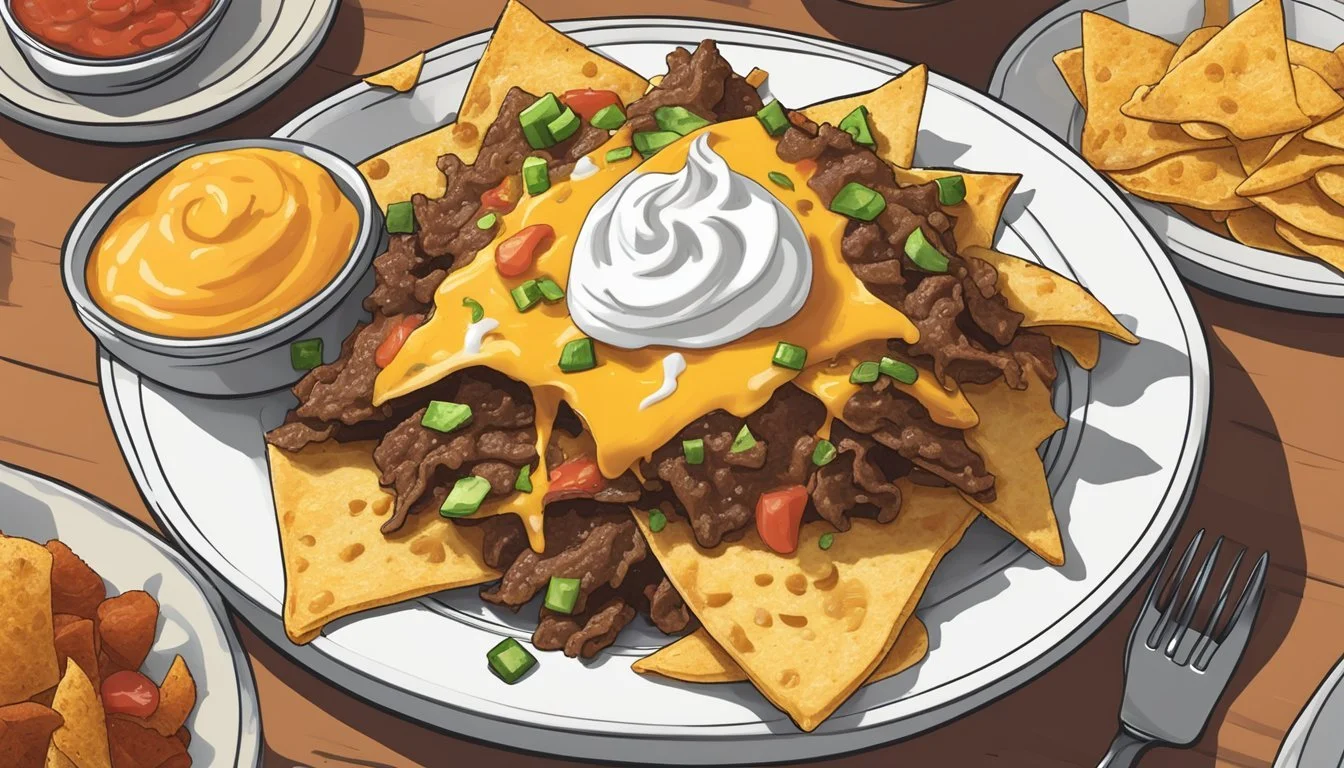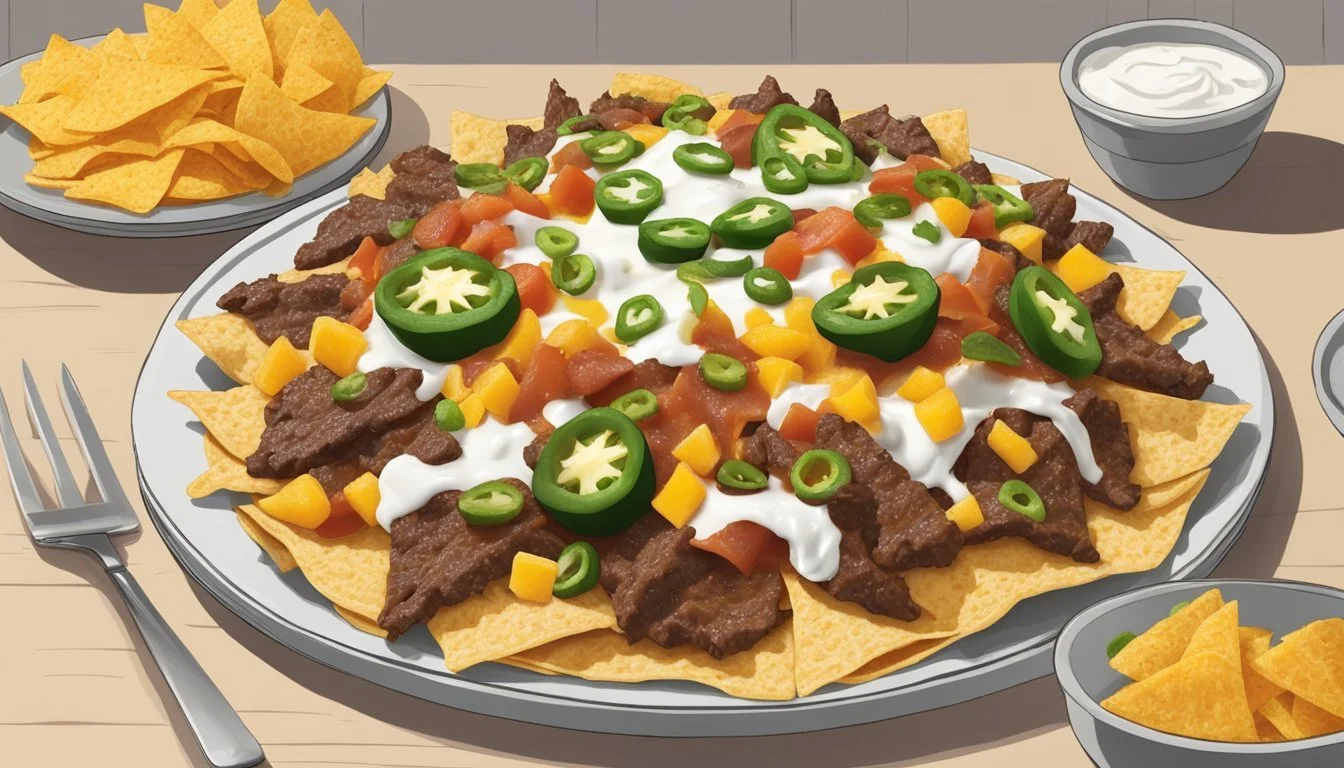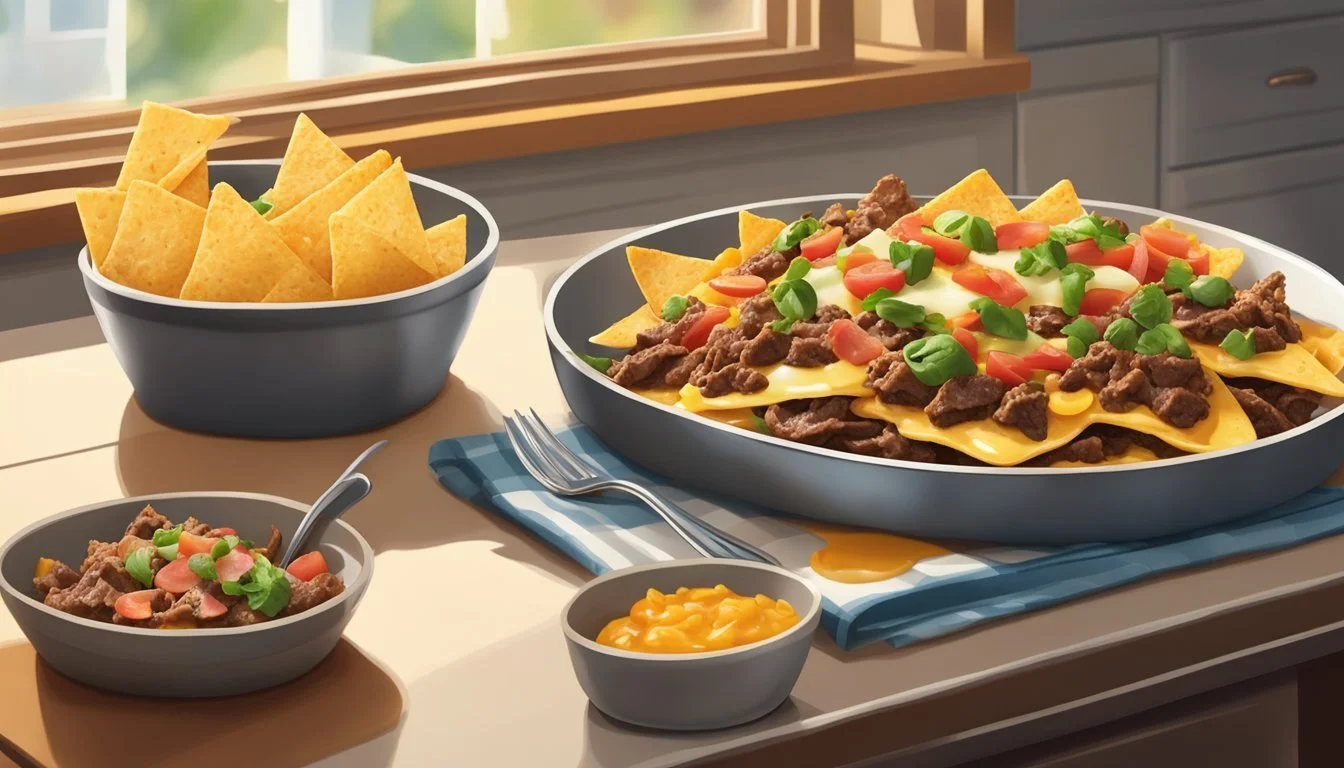How Long Do Beef Nachos Last?
Shelf Life and Storage Tips
Beef nachos are a beloved dish that can be enjoyed as a fun weeknight dinner or a savory appetizer for gatherings. They are typically piled high with ground beef, cheese, and a variety of toppings, making them a favorite among many. When stored correctly in an airtight container in the refrigerator, beef nachos can last up to three to four days.
Understanding the proper storage methods is essential to ensure that the nachos stay fresh and safe to eat. Once prepared, it is important to let them cool to room temperature before storing. This helps to maintain the texture and flavor of both the toppings and the chips.
For those who love a quick reheated snack, ensuring the nachos are stored properly makes reheating straightforward and delicious. While their best quality is enjoyed fresh, knowing how long they can last helps reduce food waste and makes meal planning easier for any nacho lover.
Understanding Beef Nachos
Beef nachos combine several components to create a satisfying dish that can be customized with a variety of toppings. Analyzing these components and their nutritional impact provides insight into what makes beef nachos both delicious and nutritious.
Components of Beef Nachos
Beef nachos consist primarily of tortilla chips, ground beef, cheese, and various toppings. Tortilla chips are usually arranged on a baking sheet and layered with seasoned ground beef, melted cheese, and additional toppings like jalapeño slices, black beans, onions, and bell peppers.
Ground beef is typically cooked with onions and seasonings. Cheese, such as cheddar or Monterey Jack, is melted on top, adding a rich flavor. Common toppings might include sour cream, guacamole, and salsa, enhancing both taste and texture.
Nutritional Information
A serving of beef nachos offers a mix of calories, protein, and fats. The ground beef provides a high level of protein and essential nutrients like iron and potassium. Calories from the beef and cheese can be substantial, contributing to the overall energy intake.
Typical nutritional values per serving (roughly 1 cup) include:
Calories: ~320
Protein: ~15g
Fat: ~20g (of which saturated fat: ~10g)
Carbohydrates: ~25g
Fiber: ~3g
Sugar: ~2g
Sodium levels can be high due to tortilla chips and added seasonings. Additionally, vitamins like Vitamin A from cheese and Vitamin C from toppings like peppers contribute to the overall nutritional profile. Calcium from cheese and possible fiber from beans add nutritional benefits.
Understanding the components and nutritional values of beef nachos helps in making informed choices about portion sizes and topping selections to maintain a balanced diet.
Preparation and Cooking
Properly preparing and cooking beef nachos ensures a delicious and satisfying meal. The following sections will cover the crucial steps to make beef nachos, including the recipe and essential baking items.
Beef Nachos Recipe
To make beef nachos, start by preheating the oven to 400°F. Heat a large skillet over medium-high heat and add a tablespoon of olive oil. Once hot, add diced onion and cook until softened, taking about 3 minutes. Incorporate minced garlic and cook for another minute without browning.
Add ground beef, breaking it into smaller pieces with a spatula. Cook the beef until it is no longer pink, approximately 8-10 minutes. Season the beef with taco seasoning, chili powder, and cumin. Optionally, add a can of refried beans and water, cooking until combined and heated through.
Prepare a baking sheet lined with parchment paper. Arrange a layer of tortilla chips. Evenly distribute the cooked beef mixture over the chips, followed by grated cheese. Bake the nachos in the oven for 10 minutes or until the cheese is melted and bubbly.
Baking Essentials
Baking sheet or tray: A large one, such as an 11 x 17-inch sheet, to spread out the nachos evenly.
Parchment paper: Used to line the baking sheet for easy cleanup.
Nonstick cooking spray: To lightly coat the parchment paper if desired.
Toppings: After baking, top the nachos with your choice of fresh ingredients. Common toppings include diced tomatoes, cilantro, green onions, sour cream, avocado, and sliced jalapeños.
Cheese grater: For grating fresh cheese, as pre-grated cheese may not melt as evenly.
By following these precise steps and using the correct tools, you ensure that the beef nachos are perfectly cooked and delicious every time.
Proper Storage Methods
To keep beef nachos fresh and tasty, it is crucial to use the right storage methods. This guide covers the best practices for refrigerating and freezing this popular snack to maintain its flavor and texture.
Refrigerating Beef Nachos
Store leftovers promptly to avoid soggy nachos. Ensure they are kept in an airtight container to prevent moisture and air from affecting the quality. Leftovers should be refrigerated within two hours of preparation.
Set your fridge temperature below 40°F (4°C) to inhibit bacterial growth. Beef nachos can be stored in the fridge for up to 3 days. For optimal freshness, reheat in the oven to keep the nachos crisp. Using the microwave might result in soggy nachos, so an oven is preferred if possible.
Freezing and Thawing
Freezing beef nachos helps extend their shelf life. Place them in a freezer-safe, airtight container to avoid freezer burn and preserve taste. It is advisable to separate the toppings and beef before freezing if possible. Nachos can be frozen for up to 2 months.
When ready to eat, thaw the nachos in the refrigerator overnight. Avoid room temperature thawing, as it can promote bacterial growth. Reheating should be done in the oven to achieve a crispy texture. Avoid the microwave for better results.
By following these guidelines, beef nachos can remain flavorful and enjoyable even after storage.
Extending Shelf Life
To keep beef nachos fresh for a longer time, it's essential to take certain measures and recognize early signs of spoilage. Proper storage can prevent sogginess and spoilage while preserving the quality of beef, cheese, and other ingredients.
Preventive Measures
Properly storing beef nachos starts with correct packaging. Use airtight containers to keep air and moisture out, which helps prevent soggy nachos. Refrigerating nachos at 40°F (4.4°C) can extend their freshness to 2-3 days. For longer storage, freezing the nachos is advisable; they can last up to 2-3 months when properly sealed.
Before refrigerating or freezing, separating the wet ingredients, such as salsa and cheese, from the nachos can help prevent them from becoming soggy. If ground beef is used, ensure it is cooled before combining it with nachos to avoid increasing the temperature, which can promote bacterial growth.
Signs of Spoilage
Spoiled beef nachos exhibit various signs, such as discoloration and a sour or off odor. Melted cheese that appears crusty or dried out is another indicator. If the ground beef emits a foul smell or has turned a grayish color, it is no longer safe to consume.
Soggy nachos usually lose their crunch and develop a mushy texture. Mold growth on any part of the nachos is a clear sign of spoilage and they should be discarded immediately. Regularly check for these signs to ensure the nachos are safe to eat and maintain their quality.
Creative Variations
When preparing beef nachos, there are many creative variations you can try to add variety and new flavors to this classic dish. These involve using alternative ingredients or incorporating fusion cuisine elements.
Alternative Ingredients
Using different meats can drastically change the taste of your nachos. Instead of ground beef, try chicken or pork.
Chicken offers a lighter flavor, perfect for those who prefer white meat. Simply season with taco seasoning mix and grill or bake until done.
Pork, on the other hand, is rich and savory, especially when slow-cooked and shredded.
Adding other types of beans like refried beans or black beans provides extra protein and texture. You can layer them along with beef or as a vegetarian alternative.
For cheese, mix it up with Monterey Jack, American, Colby, or Cheddar cheese for a variety of flavors and melting properties. Shredded cheese ensures even melting and a consistent flavor profile.
Toppings like olives, green onion, tomatoes, and avocado can add freshness and richness, balancing the heaviness of the meat and cheese. Try adding peppers for an extra kick, and drizzle with nacho cheese sauce for gooey perfection.
Fusion Nachos
Fusion nachos blend the classic nacho base with flavors from other cuisines, such as Tex-Mex. Start with the usual nacho base but add ingredients typical of another cuisine.
For example, use Italian-style beef with marinara sauce and mozzarella cheese. Top with basil and black olives for an Italian twist.
Asian-inspired nachos could feature teriyaki chicken or pork, with a topping of shredded cabbage, carrots, and a drizzle of sriracha mayo. Garnish with green onions and sesame seeds for authenticity.
Likewise, adding flavors from Greek cuisine, such as lamb seasoned with oregano, tzatziki sauce, feta cheese, and a mix of diced tomatoes and cucumbers, creates a Mediterranean variation.
These fusion ideas give a refreshing spin to your nachos, perfect for themed parties or adventurous meals.







